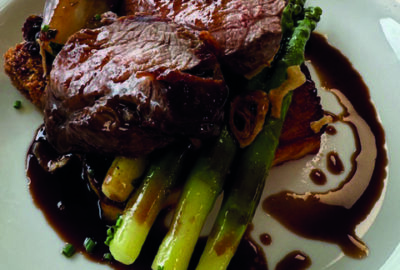While most vegetables will go into winter dormancy as soon as the temperatures drop, October is still an opportunity to get bulbs and seeds in the ground before the frosts for an early start in spring. Any remaining salads planted earlier in the year may give you a few leaves before they start to hibernate.
Broad beans planted now will provide a boost to the kitchen in early spring, and a wide selection of soft neck and hard neck garlic bulbs as well as onion sets can also go in the ground before the serious cold creeps closer. October also signals the bare-root planting season, so it is a great time to plant fruit trees, berries and currants.
STORING, PICKLING AND FERMENTING
In the dark depths of winter when the veg patch is giving you nothing, a supply of well stored vegetables and fruits can be a saving grace. Berries and fruits can be easily frozen for the winter months, whereas some veggies can be kept for a couple of months or longer if stored correctly.
Choose your varieties carefully as some will store better than others, but potatoes, carrots, beetroot, celeriac, cabbage, leeks, onions, garlic and winter squash can all be super storers. For optimum storage conditions, discard any bad or damaged veg as they can spoil the rest of the crop. Also, trim off any foliage and get rid of any loose soil. Place them in layers in boxes covered in moist sand in a cool, frost-free dark place. Alternatively, you could build yourself a root-cellar or clamp but be careful of rodents.
The other traditional never-fail storage method is jamming, pickling and fermenting. Whether it is utilising the last of your summer fruits in jams, refreshing and pickling veg before it turns or even fermenting to create gut-loving sauerkraut or kimchi, nothing needs to go to waste.
FORAGING
October is one of the best months for foragers with an array of fruits, berries and nuts filling the countryside, parks, gardens and coast. Here’s what to keep an eye out for:
DAMSONS
A member of the plum family, damsons are the size of a large grape with a beautiful blueish hue. They can be eaten fresh when ripe but just as good in jams, crumbles and boozy homemade drinks.
HAZELNUTS
Prized by foragers but also by squirrels and small mammals so you have to get there fast, hazelnuts are glorious roasted and can be used in everything from cakes and cookies to butter, pastries and sprinkles.
SLOES
Boisterously bitter when eaten straight from the blackthorn tree, sloes have become a classic for homemade sloe gin, but they can also be used to make preserves and even vinegar.
ROSEHIPS
Pretty awful when raw, the orangey-red rosehip berries are found in hedgerows and are often over-looked. Great when cooked and used to make syrups, liqueurs and jams.
MUSSELS
Found on rocks during low tide especially in October, they are a delicious delicacy but make sure you’re picking them from a clean beach and shoreline, which is becoming something of a difficulty to find.
BULLACE
A wild variety of plum tree that can produce big yields and arrives late in the season, bullace are fantastic in jams, crumbles, liqueurs, homemade fruit wine and even gin.
BEECH NUTS
An under-used nut, beech nuts will come into their own in late October and November. A wonderful snack on a hike, they can be used in winter salads, pestos, dukka or as a sprinkling on a wide range of dishes. Simply roast in the oven and scrub gently to remove the shells. Don’t gorge yourself on them – eating too many can be toxic.
SWEET CHESTNUTS
A favourite as we head towards Christmas, sweet chestnut trees were another Roman export that can be boiled, baked, roasted, candied and puréed. Found in parkland, woods and forests.
WALNUTS
Another nut first introduced by those clever Romans, walnuts store well and can be enjoyed in a wide array of sweet and savoury dishes, whether raw, dried or when pickled. Often missed or ignored, keep an eye out for the trees in gardens, urban parks and fields.


